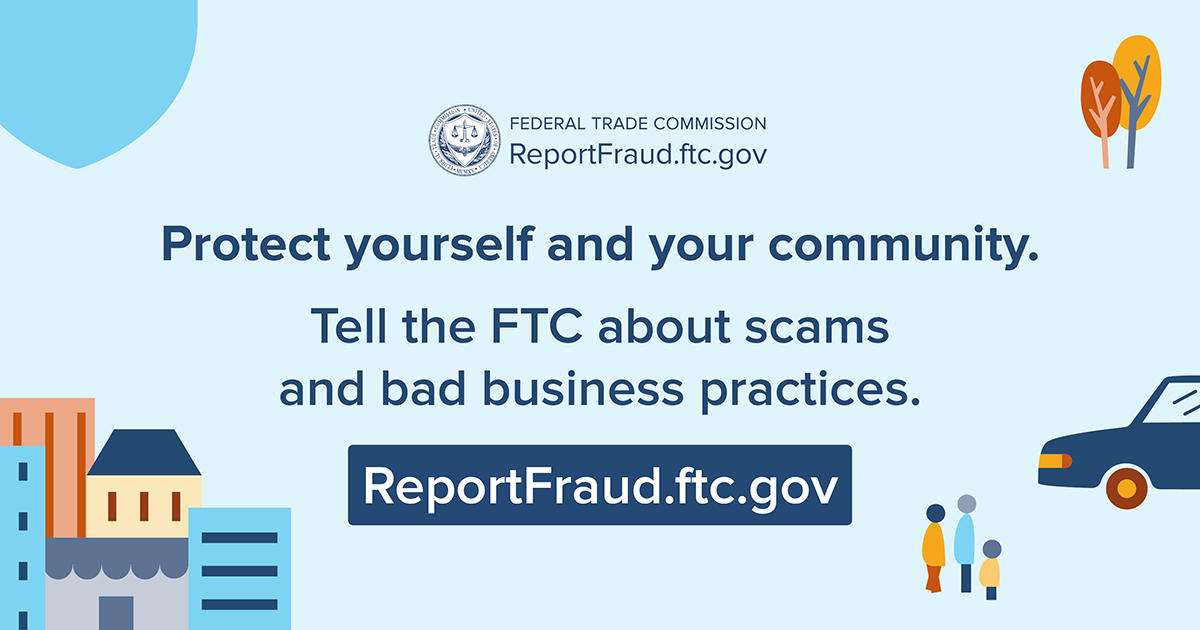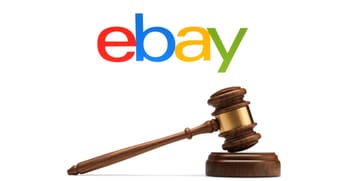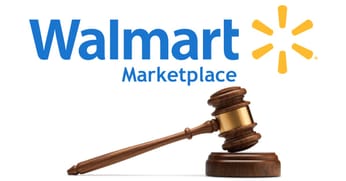Are eBay Black Friday Deals Really Discounted?
It's Black Friday and eBay is pushing massive deals up to 80% off on some items - but are consumers really getting the deep discounts being advertised?
Last month I dug into how eBay allows sellers to use strike through pricing to trick consumers into believing they are getting discounts, using an early holiday Home Furniture sale as an example.

It looks like the strike through price manipulation is also in full force for Black Friday too. 🤦♀️
How can you check to see if you're really getting a deal on eBay as holiday shopping heats up?
Pro tip - always check the price history by clicking the link that shows number available/ number sold. ✔
All examples here were pulled at random from eBay's Deals page, which is where all their Black Friday marketing banners and ads are pointing.

Kippling says this is a $99 purse, on sale at 44% off for $55.84
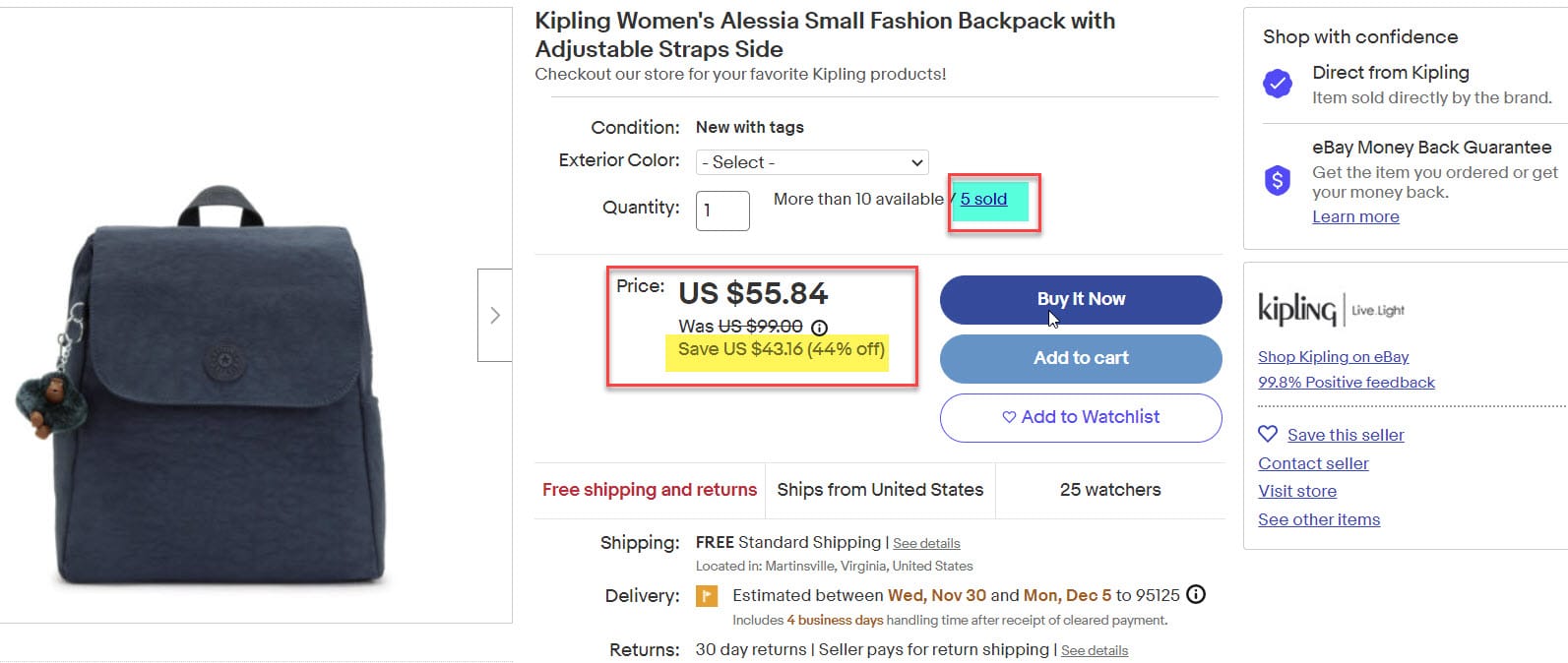
Sold history shows it has never been $99.00 and in fact at one time was as low as $39.99.
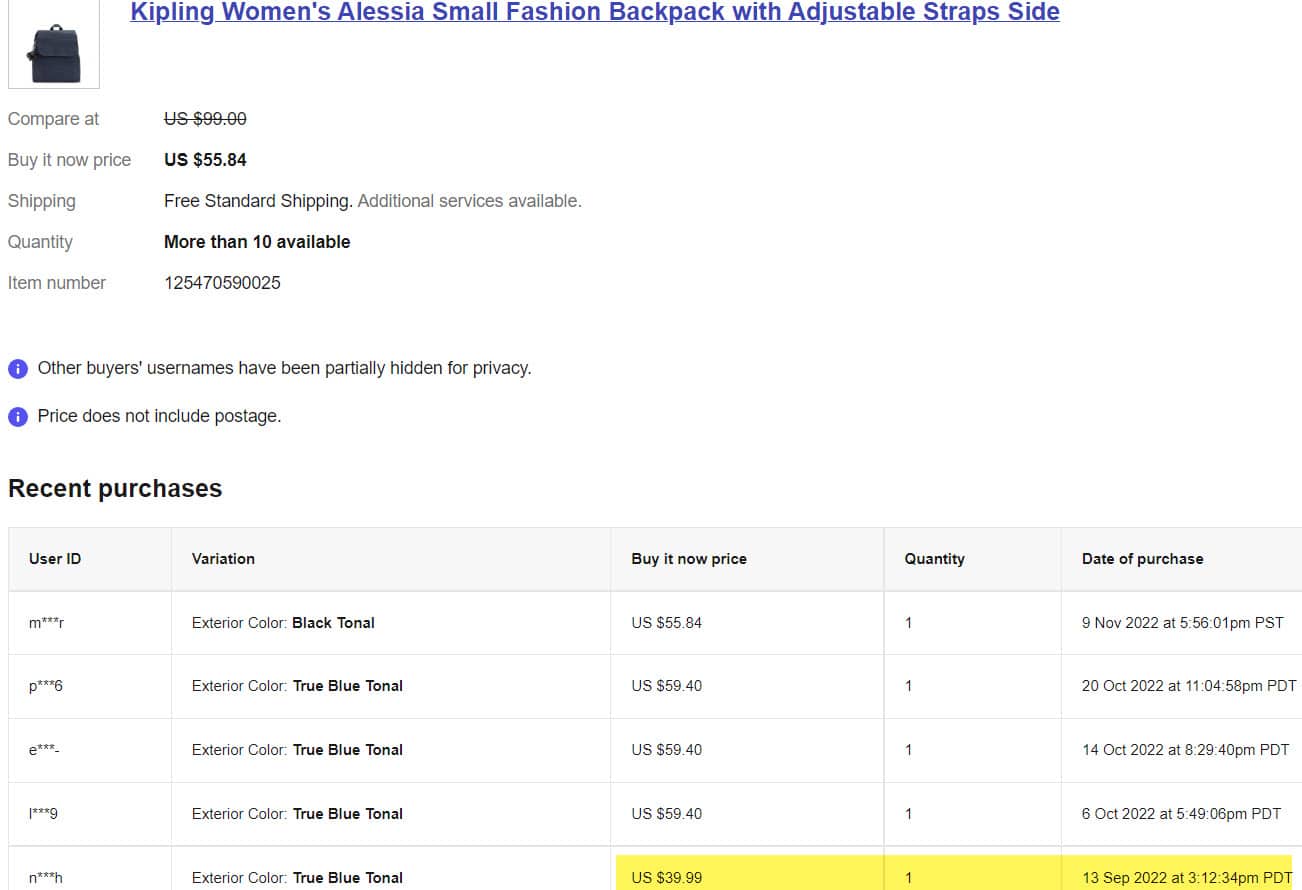

How about a pendant from Jewelry.com with a whopping 86% savings ($129 marked down to $17.99)?
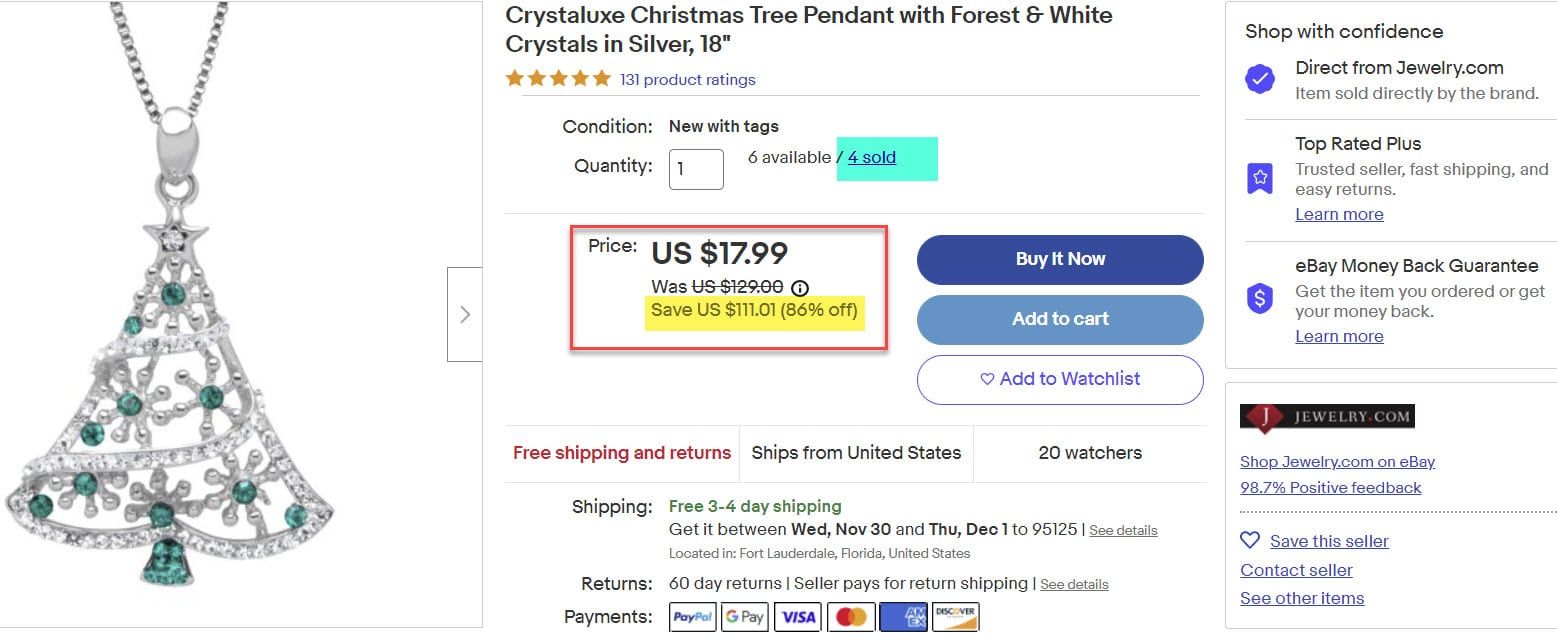
No history of it ever selling for more than $17.99.
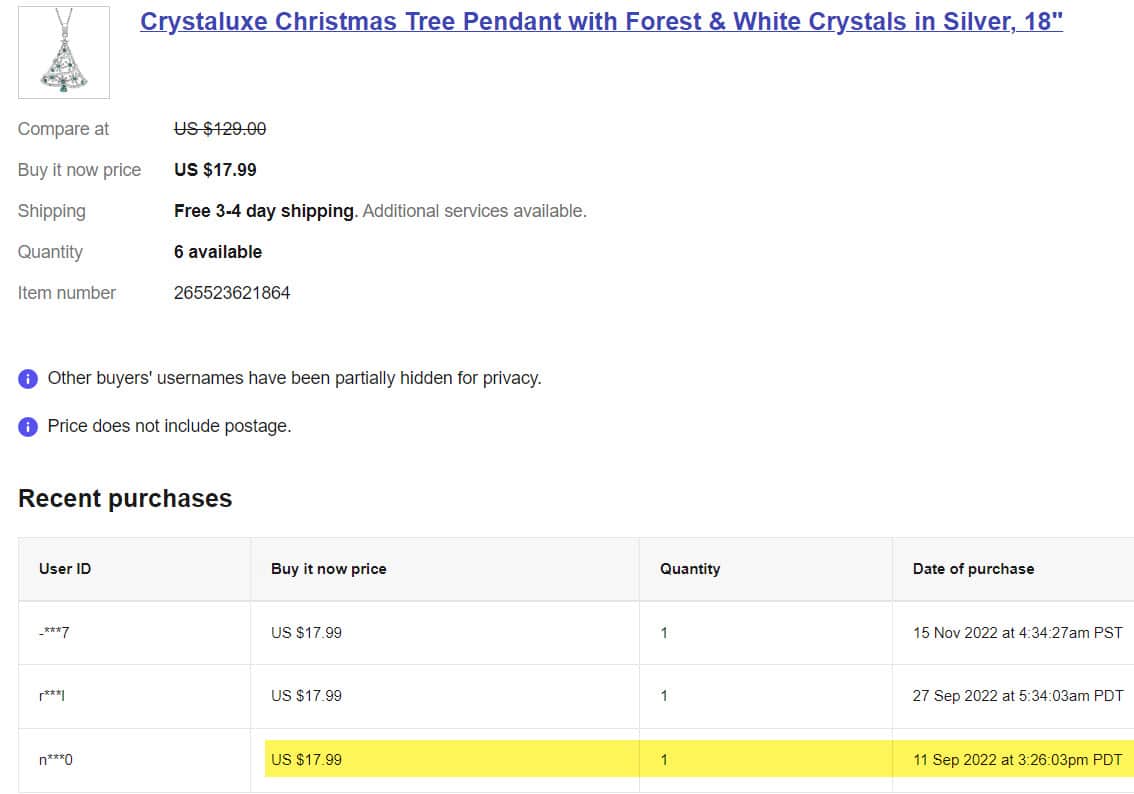

Hot Wheels at 57% off? $101.99 marked down to $43.47.
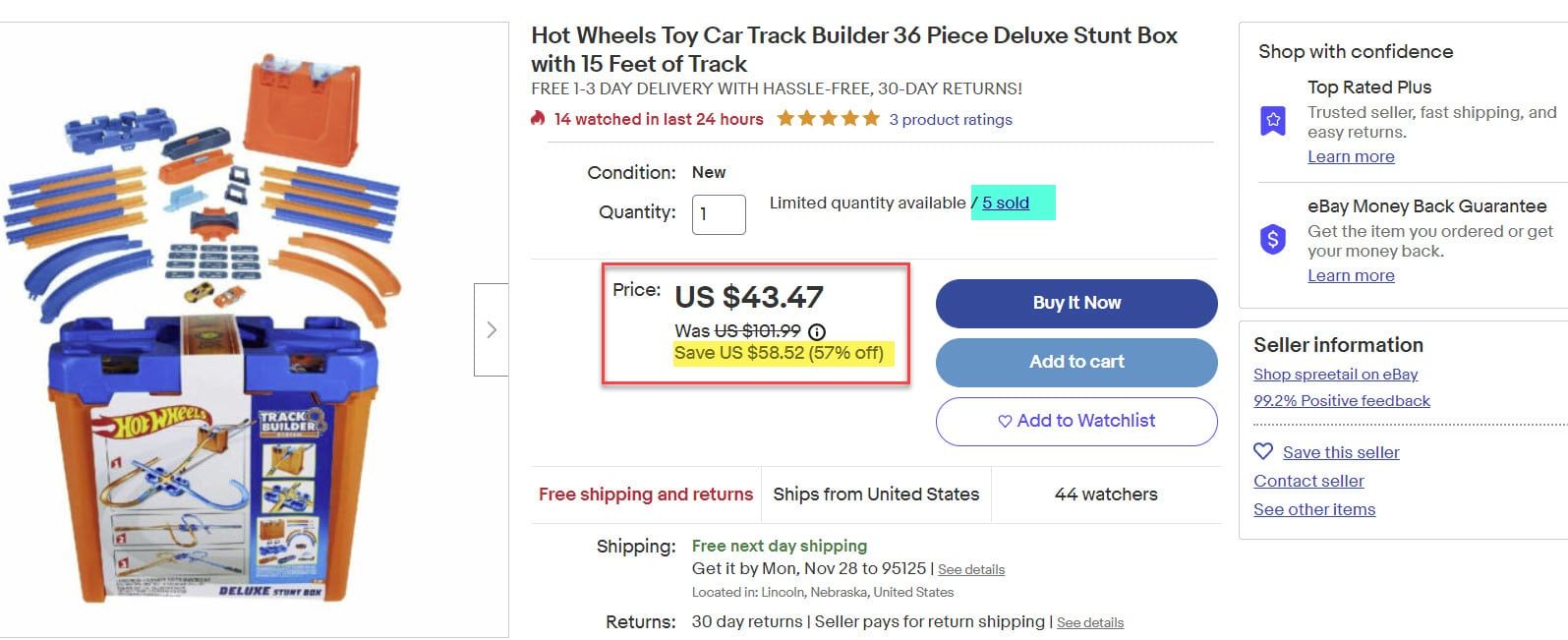
You would have been better off buying it in August at $39.45.
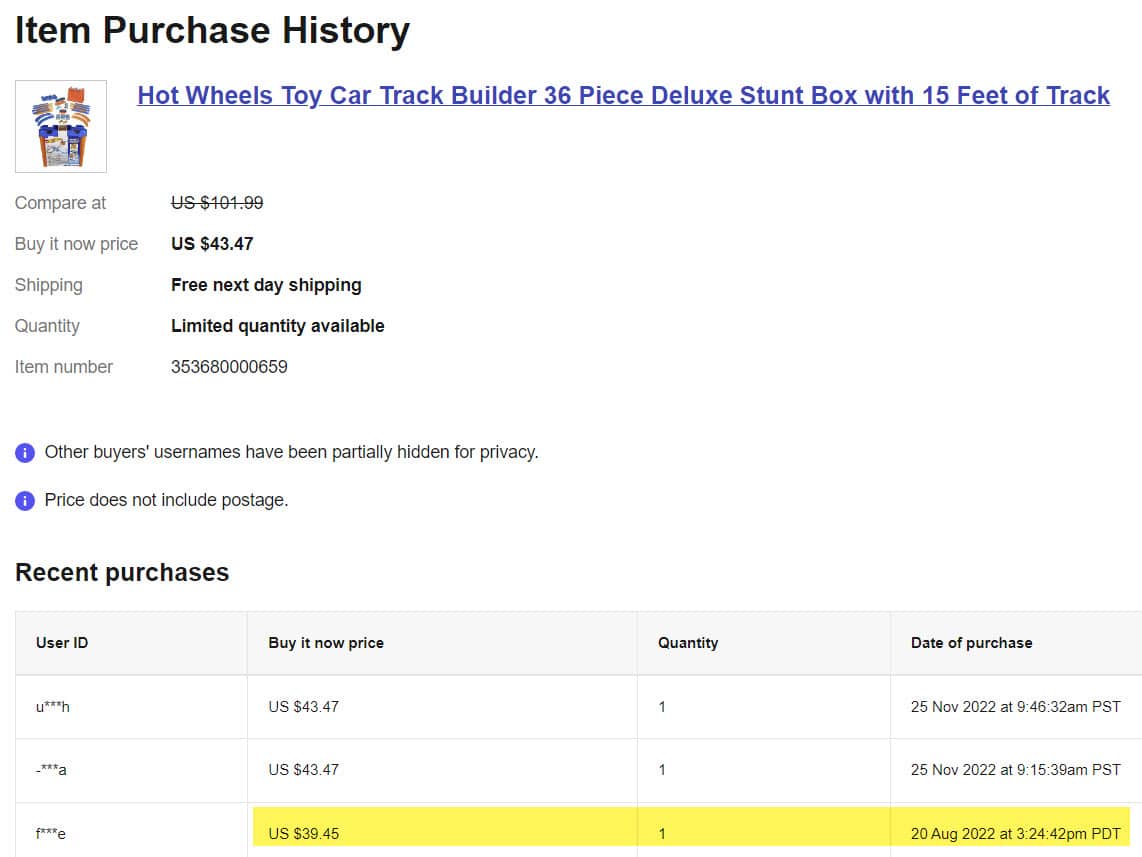

Lenovo laptop 31% percent off - $1809.99 marked down to $1249.99, $560 savings.
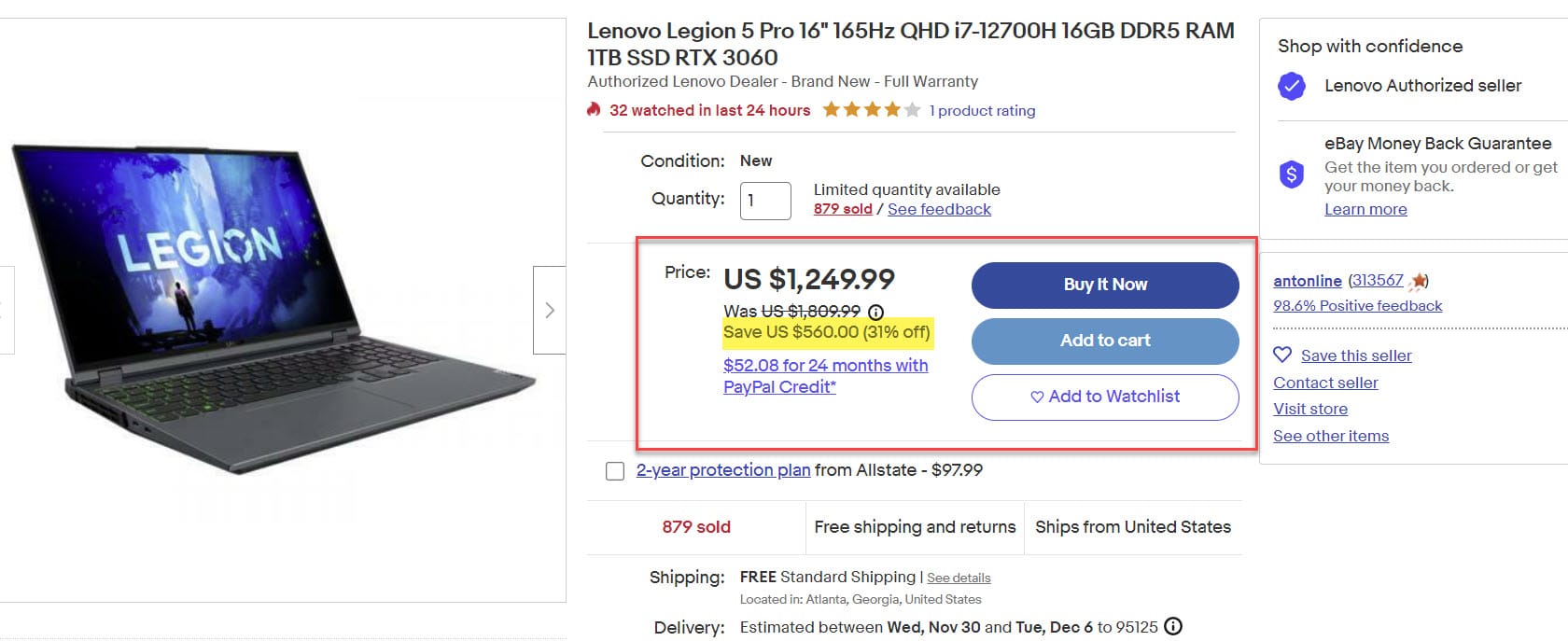
Once again no history showing it has ever been sold for $1809.99 and in fact, you would have been better off last month at $1199.99
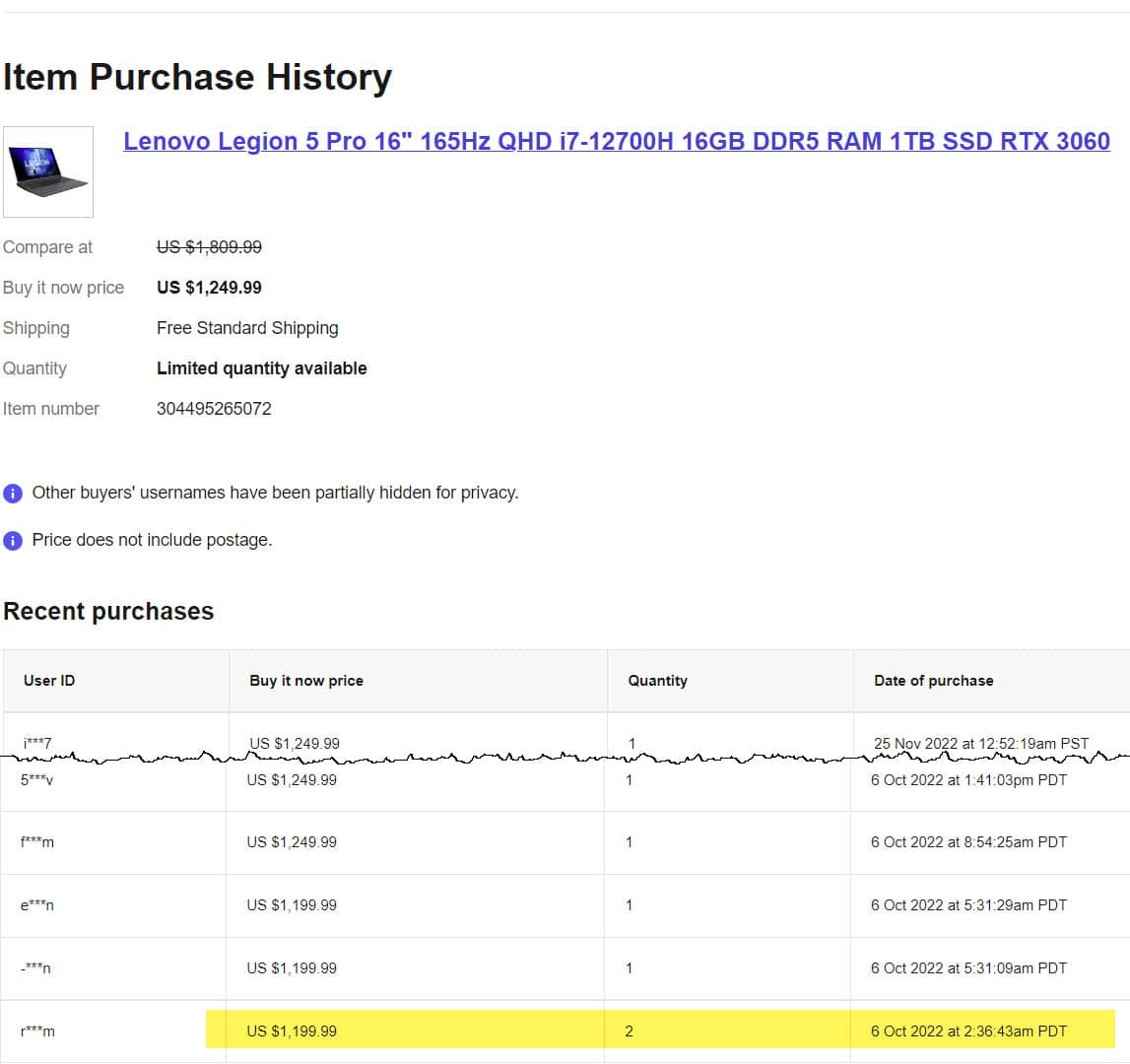

Diamond earrings worth $2,719.96 for only $592.19? A 78% savings!
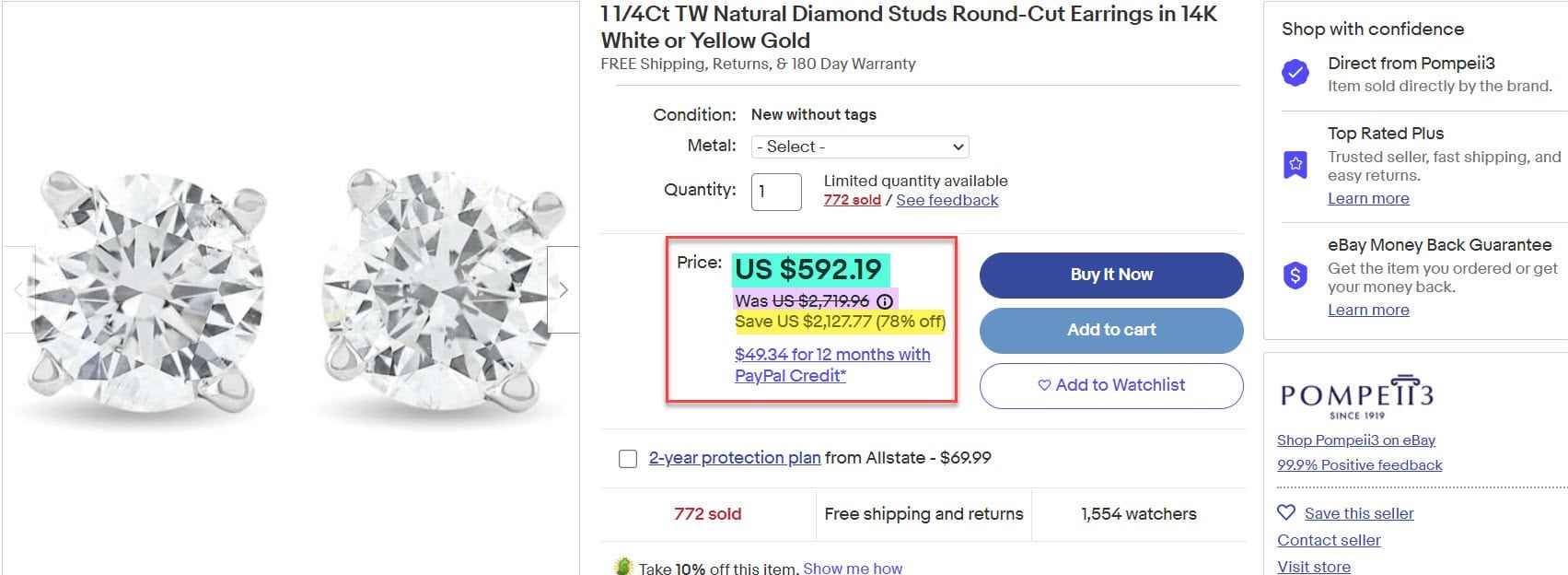
Just kidding! The highest they've ever been is $629.99 and you could have gotten them in July for $566.99
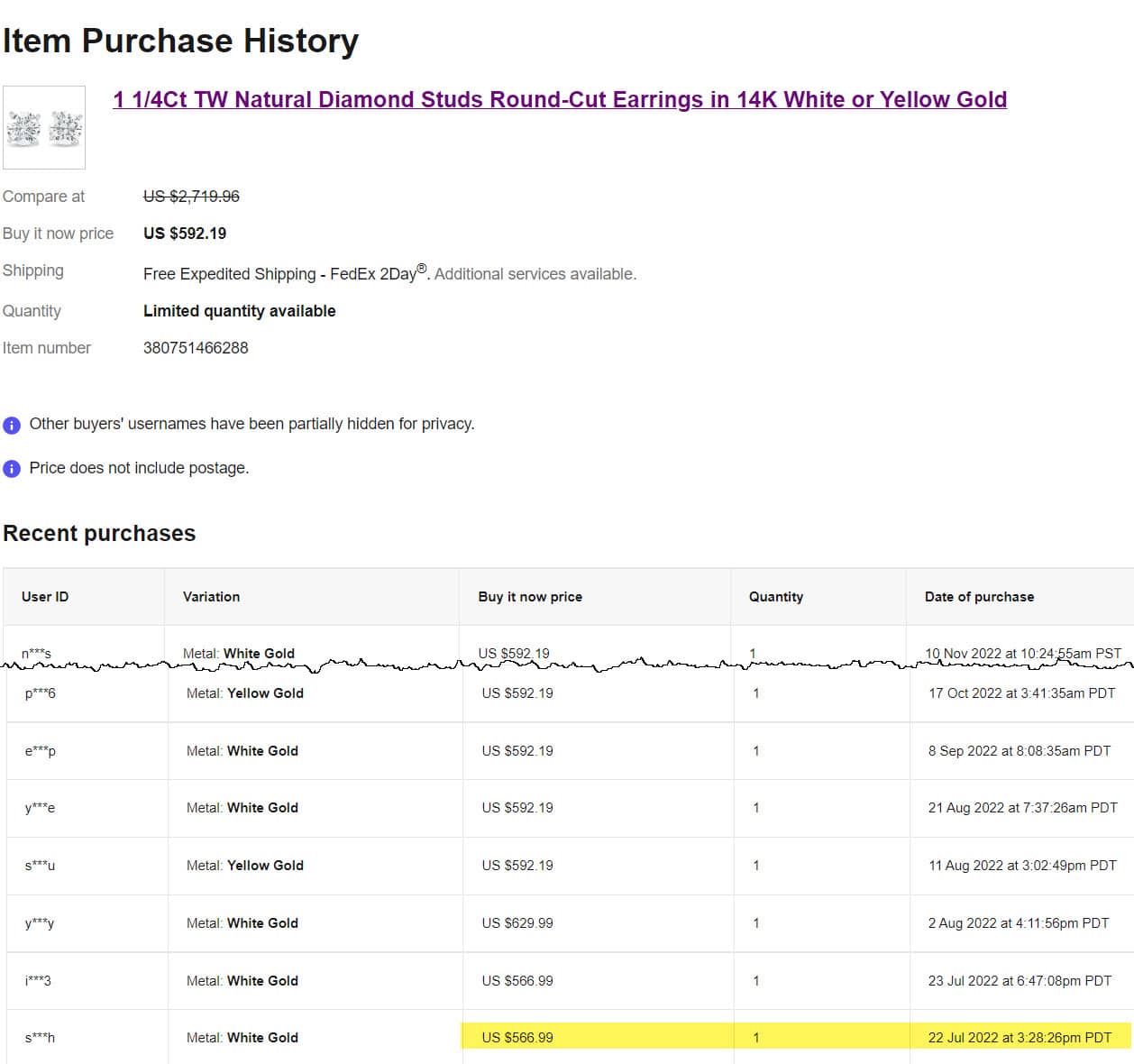
I could go on , but you get the point. Many of the supposed deals being promoted for Black Friday are in fact obvious and blatant price manipulation and false advertising, pure and simple.
eBay's excuse will of course be the strike through and discount pricing is provided by the seller, so they are not responsible.
That line of reasoning hasn't worked out very well for them in Australia where pressure from regulators and consumer protection groups recently forced them to put in place a comparative pricing policy.

The new policy applies to listings on eBay.com.au and covers all types of comparative pricing that a seller uses to establish the value of the discount to the buyer. This includes, but is not limited to, where a seller refers to:
- The recommended retail price (RRP) of an item to demonstrate a discounted current price; or
- Its own historical or previous pricing on or off eBay compared to the current price charged (including by using 'was/now' pricing or 'strike-through' pricing, or by specifying a particular dollar amount or percentage saving).
This policy also applies in circumstances where a seller provides eBay with the above information for the purposes of eBay displaying a discount on their item.
What's comparative pricing?
Comparative pricing refers to when a seller includes a recommended retail price or historical price for an item, and then makes a comparison to the current selling price. It can help a seller establish the value of the discount to buyers.How do I prove a previous selling price?
Sellers should hold evidence (for example, receipts or detailed sales records) demonstrating that:
- The items were sold at the previous selling price; and
- The previous selling price was offered for a reasonable period of time immediately prior to the product being advertised with comparative pricing using a previous selling price. What is a reasonable period of time may vary depending on the product and the frequency of price changes.
Other important notes:
To ensure that any comparative pricing representations are not false or misleading to consumers (or otherwise in contravention of the Australian Consumer Law), the seller further confirms the following:
In relation to the use of RRP:
- The referenced pricing will be accurate and current throughout the entire duration of the listing;
- RRP will only be used in cases where the product has been previously offered and sold at that RRP for a reasonable period of time; and
- RRP will not be used for products that are only supplied by the seller;
In relation to the use of a previous selling price (including 'was/now' pricing, 'strike-through' pricing or by specifying a particular dollar amount or percentage saving):
- The item has been offered by the seller at the 'was' price for a reasonable period of time immediately prior to the item being advertised with 'was/now' pricing;
- The item price has not increased on eBay.com.au from the date that is 10 days prior to advertising a discount on the listing (such as when creating a promotion in Seller Hub or participating in eBay promotions), although you may lower the prices at your discretion;
- Comparisons will not be made with prices last offered more than 6 months ago (or if they are, the seller will highlight this clearly within the listing)
Consequences for violating the eBay Australia Comparative Pricing policy can be stiff:
eBay may, in appropriate circumstances and in accordance with the terms of the User Agreement, suspend or terminate a seller's account, or impose other consequences (such as removal of eBay Top Rated seller status at an account level) if you fail to provide substantiation, or if eBay or a regulatory body determines that the comparative price is false or otherwise misleading or deceptive.
It's clear that eBay absolutely can set policies and take action to make sure sellers are not manipulating strike through pricing and misleading buyers, but they simply choose not to do so unless their hands are forced by outside scrutiny or regulation.
Maybe it's time for the FTC here in the US to get just as serious as Australia is about protecting consumers from misleading discount offers and holding marketplaces accountable for the false advertising they allow to proliferate on their platforms.
If you end up getting tricked by false Black Friday discount advertising on eBay, here's where you can report it:
